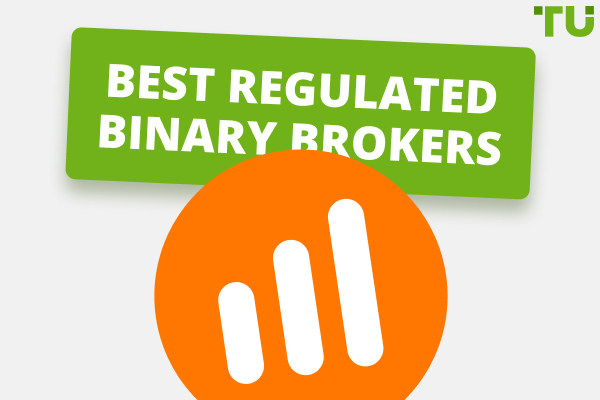What is the best indicator for binary?
Best indicators for binary:
Moving averages - best for trending long-term strategies.
Bollinger Bands - best for channel strategies.
RSI - best for confirming overbought and oversold zones.
MACD - best momentum oscillator.
The best indicator for binary options trading depends on the individual trader's strategy and preferences. Some popular indicators include moving averages, relative strength index (RSI), and Bollinger Bands. It's important to note that no indicator is perfect, and a combination of indicators may be more effective. It's also important to backtest and virtually trade the indicator strategy on the markets before using them in live trading.
Binary options trading is a popular form of investing that can be done online. It is a simplified version of trading where investors predict the movement of an asset's price, either up or down, within a specific period of time. Binary options trading can be quite profitable, but it is important to have the right tools and strategies in place to be successful, and one of the most essential tools for any binary trader is an indicator.
Start trading binary options now with Pocket Option!Best binary trading indicators
In this article, the experts at TU will discuss the best binary trading indicators. They will first explain what binary indicator signals are and their importance in binary trading. And then, they will delve into the top 5 indicators for binary options trading and the best indicator for beginners who are new to binary trading. By the end of this article, you will have a better understanding of how to use indicators to improve your binary trading strategies and increase your chances of success.
What are binary indicators signals?
Binary options trading requires traders to make predictions about the movement of an asset's price. Indicators are tools that can help traders make more informed predictions by analyzing historical data and identifying patterns. In this section, TU experts will discuss the best indicators for binary trading and how they can be used to improve your trading results.
Technical indicators, such as binary trading indicators, are tools utilized by traders to anticipate the trajectory of an asset's value in binary options trading. These indicators draw on historical data and mathematical formulae to examine market patterns and trends, thereby generating signals for specific securities. As a result, they can furnish valuable information about all the major asset classes that can aid traders in making more informed predictions about the market.
There are two primary categories of indicators employed in binary options trading. These are overlays and oscillators. Overlays are indicators that use a scale based on prices plotted over a chart of stock prices. On the other hand, oscillators fluctuate between minimum and maximum levels and are charted both above and below a horizontal line on the chart.
The indicators display three fundamental characteristics: volatility of the asset, its trend, and chart timeframes. By providing this information, traders can calculate the likelihood of price movements for a specific security. However, it's vital to remember that not all market indicators may be appropriate for binary options. Thus it's best to use suitable ones when conducting your analysis and formulating a strategy.
Binary Options Signals – Top 7 Free Providers for TradingTop 5 indicators for binary trading
Based on research and surveys, the experts at TU have listed down the top 5 indicators for binary trading:
1. Moving Averages: This indicator is used to identify the overall trend of an asset. It does so by averaging the closing prices of an investment over a specific time.
2. Relative Strength Index (RSI): This indicator is used to measure the strength of an asset's price. It does so by comparing the average gain of an asset to the average loss.
3. Bollinger Bands: This indicator is used to measure volatility. It does so by plotting two standard deviations away from a moving average.
4. Stochastic Oscillator: The Stochastic Oscillator, a widely used technical indicator, aids traders in determining when the market is overbought or oversold. It accomplishes this by contrasting the current closing price to a range of prices over a defined timeframe.
5. MACD: This indicator is a widely used technical indicator that helps traders identify trends and momentum in a security's price. It does so by comparing the relationship between a couple of moving averages over a specific period. The indicator is particularly useful in detecting changes in momentum, which can signal a potential trend reversal. If you are interested in how to conduct technical analysis of binary options trading, read the Traders Union article
Should I use binary indicator signals?
The use of binary indicator signals is a matter of personal preference, which can vary depending on the trader's strategy and experience level. Experts have outlined the following pros and cons of using binary indicator signals:
👍 Pros
•1. Indicators can help traders make more informed predictions about the market: Binary indicator signals use historical data and mathematical algorithms to analyze the market and identify patterns. These indicators can provide key information about the market's direction and help traders make more accurate predictions about the movement of an asset's price.
•2. Indicators can identify patterns and trends that may not be immediately visible: Many traders find it difficult to identify patterns and trends in the market, especially when the market is volatile. Indicators can help traders identify these patterns and trends, making it easier for them to predict the direction of the market.
•3. Indicators can help traders identify overbought and oversold conditions: Some indicators, such as the Relative Strength Index (RSI), are designed to identify overbought and oversold conditions in the market. This information can be helpful for traders who are looking to enter or exit a trade.
👎 Cons
•1. Indicators are not always accurate and can produce false signals: No indicator is 100% accurate, and there is always the possibility of false signals being generated. This can be a problem for traders who rely too heavily on indicators and make trades based on false alerts.
•2. Indicators can be complex and challenging to interpret for beginners: Some indicators can be quite complex and difficult for beginners to understand and interpret. This can make it difficult for new traders to use indicators effectively, leading to poor trading decisions.
•3. Indicators may not consider all of the factors that can affect the market: Indicators are based on historical data and mathematical algorithms. However, they may not take into account all of the factors that can affect the market, such as economic events, political developments, etc., which could lead to a wrong prediction.
In conclusion, it's important to remember that indicators are just one tool traders can use to analyze the market. It's essential to use them in conjunction with other analysis methods and to not rely solely on indicators for making trading decisions.
Best Binary Options BonusesBest binary indicator for beginners
The Relative Strength Index, or RSI, stands out as one of the most helpful indicators for newcomers to binary options trading. This momentum oscillator, which fluctuates between 0 and 100, provides at-a-glance insights into the speed and size of recent price movements. Values under 30 suggest an oversold market primed for a reversal, while values over 70 indicate an overbought condition due for a pullback.
But one of the RSI's most powerful features, especially for binary trading, is its uncanny ability to detect divergences. Divergences form when the RSI line and actual price trend start to separate and move in opposite directions. For instance, if the price charts new highs but RSI starts trending downwards and fails to confirm the fresh peaks, this bearish divergence signals waning momentum that could foreshadow an impending trend reversal. Spotting these divergences early allows traders to pinpoint critical moments to enter or exit positions before the price itself swings around.
In essence, by shining a clear spotlight on overbought/oversold levels and tipping traders off to momentum shifts via divergences, RSI perfectly complements binary options trading. It distills and translates the complex interplay between price and momentum into simple, actionable signals. This unique clarity and objectivity explains why RSI remains a go-to indicator, especially for those just beginning their journey into binary trading.
Best binary options brokers
FAQ
How do you predict binary trading?
One can use technical analysis, such as studying charts and using indicators, or fundamental analysis, such as studying economic events and market news, to predict binary trading.
What is the best strategy in binary options?
There is no "best" strategy for binary options, as different strategies work better for traders and market conditions. It's best to experiment with different strategies and find what works best for you.
What is the most effective indicator?
It depends on the trader's strategy and the market conditions. Different indicators have different strengths and weaknesses, and some may be more effective than others in certain market conditions.
Which time frame is best for binary options?
This depends on the trader's strategy and the market conditions. For example, some traders prefer short-term trading with time frames such as 1-minute or 5-minute charts, while others prefer longer-term trading with time frames such as daily or weekly charts.
Glossary for novice traders
-
1
Broker
A broker is a legal entity or individual that performs as an intermediary when making trades in the financial markets. Private investors cannot trade without a broker, since only brokers can execute trades on the exchanges.
-
2
Trading
Trading involves the act of buying and selling financial assets like stocks, currencies, or commodities with the intention of profiting from market price fluctuations. Traders employ various strategies, analysis techniques, and risk management practices to make informed decisions and optimize their chances of success in the financial markets.
-
3
Options trading
Options trading is a financial derivative strategy that involves the buying and selling of options contracts, which give traders the right (but not the obligation) to buy or sell an underlying asset at a specified price, known as the strike price, before or on a predetermined expiration date. There are two main types of options: call options, which allow the holder to buy the underlying asset, and put options, which allow the holder to sell the underlying asset.
-
4
Binary options trading
Binary options trading is a financial trading method where traders speculate on the price movement of various assets, such as stocks, currencies, or commodities, by predicting whether the price will rise or fall within a specified time frame, often as short as a few minutes. Unlike traditional trading, binary options have only two possible outcomes: a fixed payout if the trader's prediction is correct or a loss of the invested amount if the prediction is wrong.
-
5
Index
Index in trading is the measure of the performance of a group of stocks, which can include the assets and securities in it.
Team that worked on the article
Chinmay Soni is a financial analyst with more than 5 years of experience in working with stocks, Forex, derivatives, and other assets. As a founder of a boutique research firm and an active researcher, he covers various industries and fields, providing insights backed by statistical data. He is also an educator in the field of finance and technology.
As an author for Traders Union, he contributes his deep analytical insights on various topics, taking into account various aspects.
Dr. BJ Johnson is a PhD in English Language and an editor with over 15 years of experience. He earned his degree in English Language in the U.S and the UK. In 2020, Dr. Johnson joined the Traders Union team. Since then, he has created over 100 exclusive articles and edited over 300 articles of other authors.











